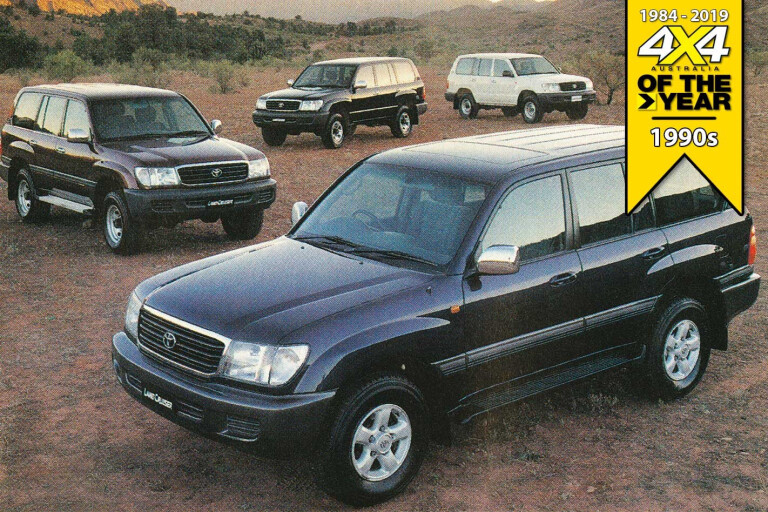
THE 1990s heralded a vast improvement in music (hello, the grunge scene), and the once-mighty Berlin Wall fell. For the off-road world, it offered buyers the first hint of where the four-wheel drive vehicle was going in terms of broadening its appeal. Up until this point, 4x4s were, barring a few exceptions, still viewed by the buying public as a utilitarian vehicle, with an inherent rough ride and rudimentary interior.
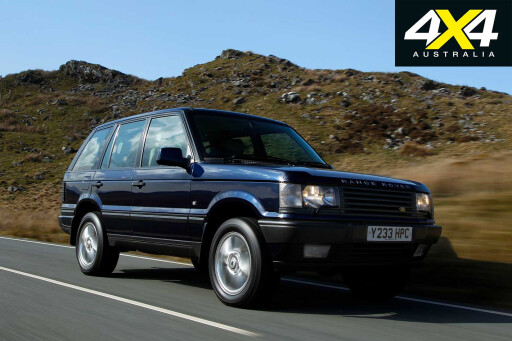 The ’90s saw this change – slowly at first – but by the end of this decade buyers would be able to throw any number of 4x4 wagons into the mix as options for the ‘family car’, knowing they’d get a reasonably comfortable on-road experience, plenty of storage space for the kids and the shopping, along with go-anywhere capability.
The ’90s saw this change – slowly at first – but by the end of this decade buyers would be able to throw any number of 4x4 wagons into the mix as options for the ‘family car’, knowing they’d get a reasonably comfortable on-road experience, plenty of storage space for the kids and the shopping, along with go-anywhere capability.
This was, in part, thanks to numerous safety advancements (ABS, airbags, etc.) but more because of the fact some manufacturers were shifting away from ‘traditional’ live axles front/rear and leaf springs to offer improved on-road ride and handling without sacrificing too much on the rough stuff.
In a way, this began with the inaugural 4x4OTY winner of 1984 – the Mitsubishi Pajero – so it was only fitting the Japanese brand continued to lead the way in the early years of the new decade.
1990
Over $36,000 – Toyota Land Cruiser 80 Series
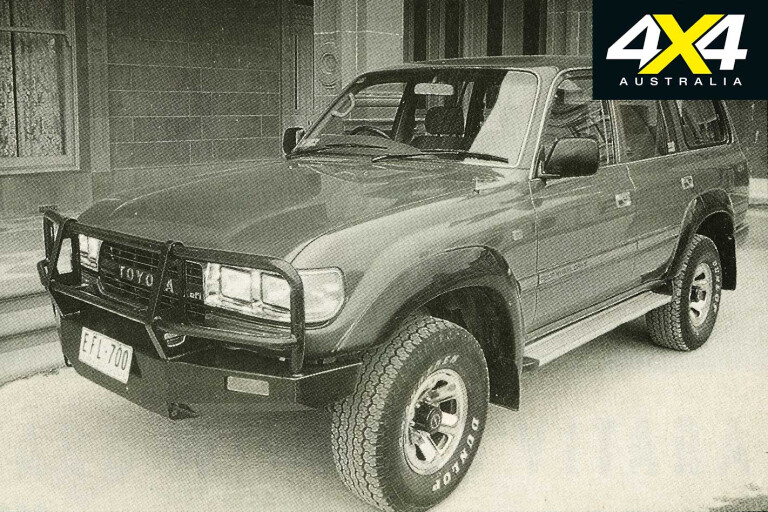
TOYOTA scrambled to catch up with the knockout that was Nissan’s GQ Patrol, launching the first 80 Series in 1990.
It was popular from the get-go, thanks to its all-coil/live-axle suspension setup, decent on-road ride and handling, huge fuel capacity (145L), full-time 4WD on-road, and serious off-road chops. It was a mini-revolution when it was released, and easily towelled the rest of the 4x4OTY competition in 1990.
However, that wasn’t perfect; the engines were still dated – at launch you could get a naturally aspirated six-cylinder or the far more popular 4.2-litre six-cylinder diesel – but Toyota fans didn’t have to wait very long for a welcome update on the 80…
Under $36,000 – Toyota 4Runner V6
THE second-gen 4Runner improved greatly on the first incarnation, with a stonking 105kW/240Nm 3.0-litre V6 now an option, alongside the carry-over 2.4-litre petrol four, a new 2.2-litre four, and the 2.8-litre diesel.
Underneath, it was still all Hilux, with the well proved torsion-bar front end and live axle rear simple but effective, with one main change being the fitment of coil springs at the rear, replacing the previous leaf-sprung arrangement.
The body was now a ‘proper’ wagon, with Toyota doing away with the ‘add-on’ rear canopy setup and producing a complete wagon body for the popular rig. The diesel was slightly more frugal than the petrol options, but if you wanted to get anywhere in any type of hurry, the 3.0-litre V6 offered reasonably spritely performance, without being too thirsty.
1991
Over $37,000 – Mitsubishi Pajero GLS V6 Wagon & Under 37,000 – Mitsubishi Pajero GLS V6 Sports
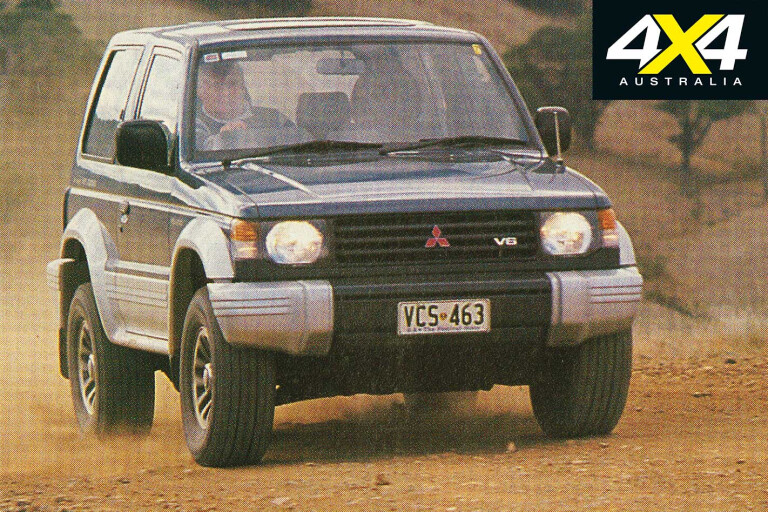
THE all-new second-generation Pajero offered so much across its entire model range that it scooped both prize pools in 1991.
Besides a stretching of both the SWB and wagon wheelbases, and two new donks (a 3.0-litre V6 petrol and a 2.5TD) buyers had the option of Super Select 4WD that allowed drivers to utilise 2WD or full-time 4WD on bitumen, with two other modes – locked centre diff 4WD and low-range 4WD – that, when combined with the new rear diff-lock made it seriously capable in the rough stuff. Multi-mode ABS also made its first appearance.
1992
Over $38,000 – Toyota Land Cruiser 80 Series
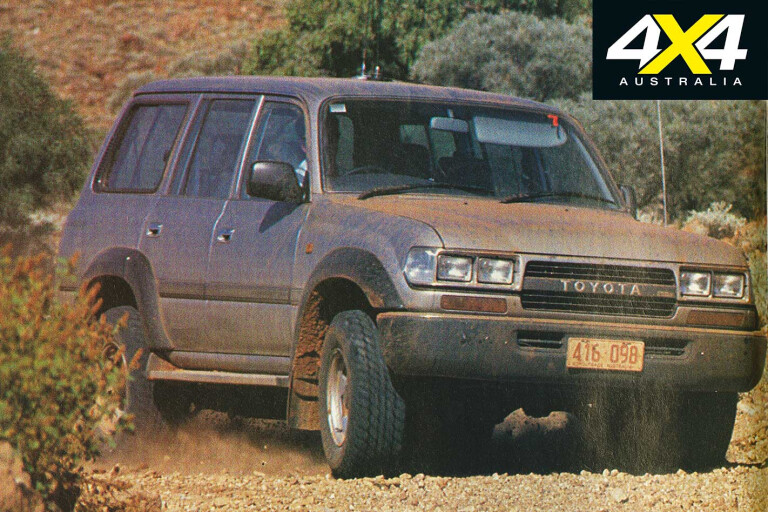
TOYOTA was on the back foot after the release of Nissan’s GQ Patrol. It’s fightback started with the launch of the first 80 Series in 1990. It was popular from the get-go, thanks to its all-coil/live-axle suspension setup, decent on-road ride and handling, huge fuel capacity (145L), full-time 4WD on-road, and serious off-road chops.
However, it really came into its own in 1992 with the release of the 4.5-litre twin-cam multi-valve six-cylinder petrol engine. This engine possessed huge amounts of grunt (for its time) and was pretty much bombproof – you just had to live with its considerable thirst. The alternative donk – a 4.2-litre turbo-diesel - was the tourers’ favourite, helped by its more frugal consumption and those two big fuel tanks.
Under $38,000 – Holden Jackaroo

BIGGER and better, the ’92 Jackaroo was all-new, with the body (and interior) being larger than the previous model (but still of body-on-chassis construction) and being fitted with two impressive new Isuzu powerplants – a 130kW/260Nm 3.2-litre V6 petrol and a 3.1-litre turbo-diesel four-cylinder that pushed out 84kW and 260Nm.
The vehicle rolled on a coil-sprung rear and torsion-bar front end for a better ride than the previous-gen Jackaroo, although it stayed with a part-time 4WD drivetrain, rather than a constant 4WD/low-range setup.
1993
Over $44,000 – Toyota Land Cruiser GXL
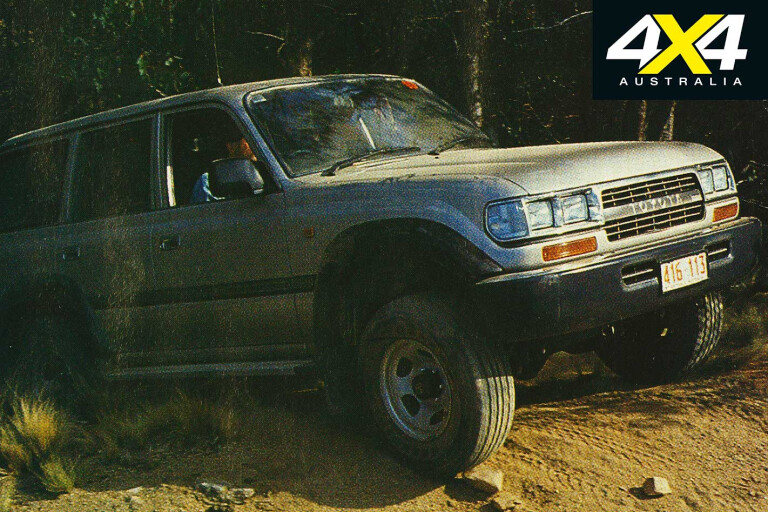
THE 80 Series combo of three six-cylinder engine choices (diesel, turbo-diesel, or petrol) along with its already well proved full chassis, live axle front/rear and all-coil suspension continued the Cruiser’s exemplary market performance in 1993.
The still relatively new Cruiser was augmented with the addition of optional front and rear diff-locks and beefier brakes in ’93 but that fearsome fuel consumption of the petrol was unchanged. Still, with its grunt-laden performance, few petrol Cruiser owners were complaining.
Under $44,000 – Land Rover Discovery
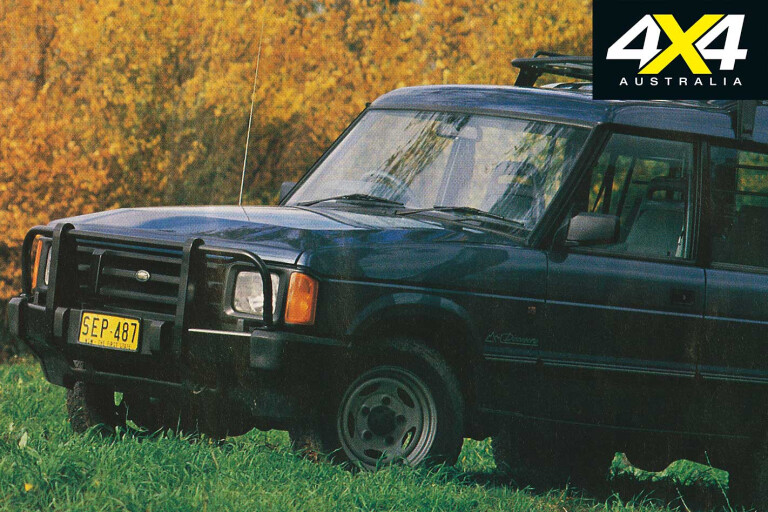
TOUTED as the ‘affordable Range Rover’ by some off-road journos, the Land Rover Discovery had been in Australia since 1991, albeit initially only in 3.5-litre V8, three-door form. By 1993 the sweet little 2.5-litre four-cylinder turbo-diesel (aka 200Tdi) had arrived, sporting an underwhelming 83kW of power and 265Nm of torque, but with class-leading fuel economy. That ‘grunt’ was put to the ground via a five-speed manual or four-speed auto.
Add in permanent 4WD on- and off-road, well-proved underpinnings (long-travel all-coil suspension, courtesy of the Range Rover), plus the availability of a five-door model (with the option of two jump-seats in the rear cargo area to up capacity to seven) and you had the ideal family adventure. It was as comfortable pootling around the suburbs as it was scrabbling up a rocky High Country track.
1994
Over $46,000 – Land Rover Discovery Es
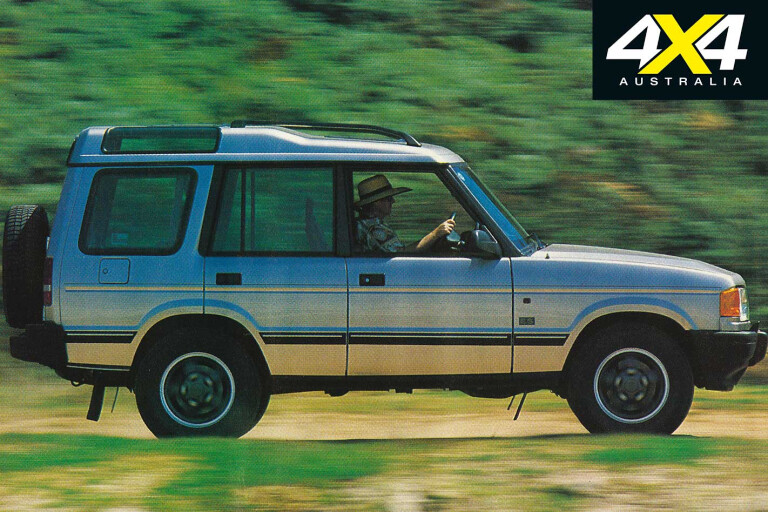
THE Land Rover Discovery copped another major upgrade in 1994, with the now-3.9-litre V8 being fuel-injected and the 2.5-litre turbo-diesel four (now dubbed 300Tdi). As well, the Discovery Es had twin airbags as standard – a world-first (along with Range Rover LSE stablemate) for a four-wheel drive vehicle.
Changes to the oiler included revised cylinder head, turbocharger, exhaust, fuel injectors, an EGR and more, aimed at quieting the engine down and also enabling it to meet then-new Euro III emission specs. Backing both engines was the new (and stronger) R380 five-speed manual.
The ZF four-speed auto continued unchanged. The interior was also all-new – and far more modern than the ’80s-spec dash of earlier Discos. The final touch was fitment of sway bars to improve on-road handling.
Under $46,000 – Jeep Cherokee XJ Sport
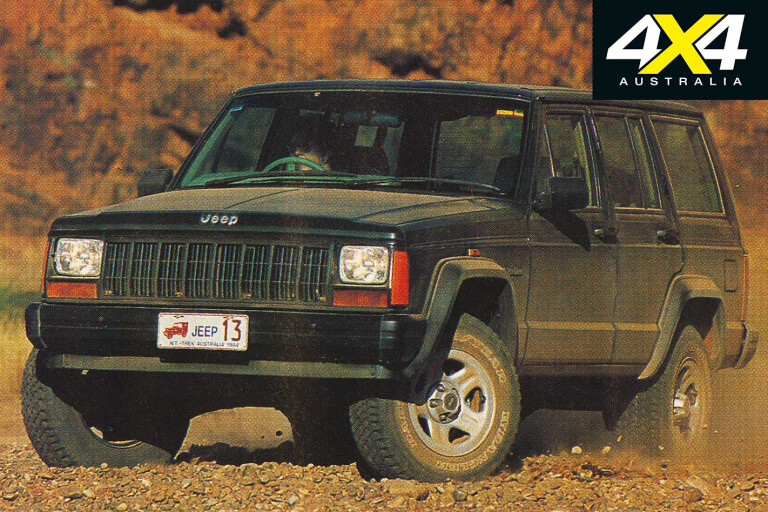
THE Jeep Cherokee XJ was the US brand’s re-entry into the Aussie new-vehicle market. The XJ Cherokee included one of the best petrol engines around at the time – a 4.0-litre fuel-injected overhead-valve inline six-cylinder – that offered reasonable power (136kW) and plenty of torque, with 290Nm.
The vehicle itself was relatively light, and this donk, backed by a four-speed auto, meant the Cherokee was pretty damn quick on the road. That big lazy 4.0-litre also lent itself well to off-road duties, with plenty of that torque available down low in the rev range.
Interestingly, the Jeep also offered constant four-wheel drive on sealed surfaces, as well as 2WD and low-4. With decent equipment levels, a reasonable sized 76-litre fuel tank, all-terrain tyres and heavy-duty spring and shocks, the Cherokee Sport was the ideal re-introduction to the US icon for Aussie buyers.
1995
Over $47,000 – Range Rover
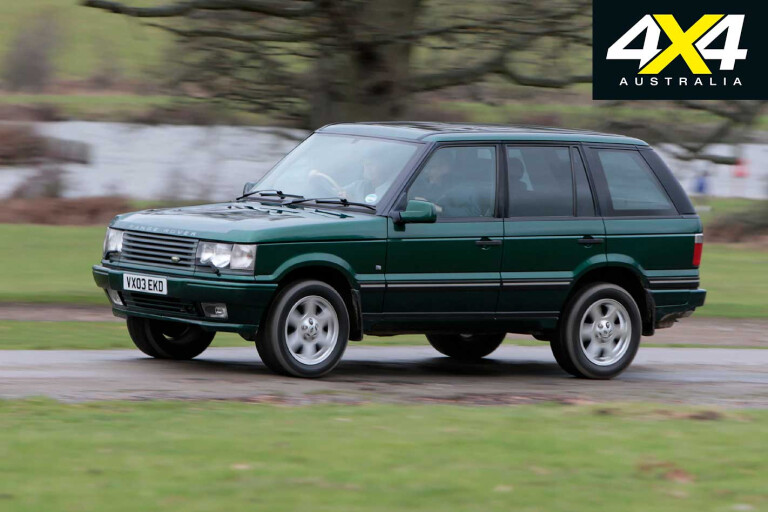
THE P38A Range Rover had a hell of a lot to live up to; the Rangie Classic had remained relatively unchanged – and popular with buyers – over its long 25-year run.
The P38 was all-new; a heavier, larger body (with more interior space), more grunt (buyers had the option of a 132kW/304Nm 4.0-litre V8 or 157kW/358Nm 4.6-litre V8) and a shed-load of electronically controlled components, including the now range-standard electronic air suspension (EAS; now with five height settings).
Buyers (and vehicle testers) enjoyed the upping of the vehicle’s luxury component, and (thanks to EAS) revelled in a distinct improvement in on-road ride and handling, without sacrificing off-road capability.
The P38A was, at the time, a huge technological leap forward, but in hindsight, allowing for all the ‘issues’ around the electronics and air suspension, maybe LR should have opted to crawl first, before it walked.
Under $47,000 – Mitsubishi Pajero

THE second-gen Pajero kept selling well in the mid-’90s, and was subject to a number of rolling changes, with the 3.0-litre V6 copping a tune-up for more grunt, but the 2.8-litre turbo-diesel remaining the big seller, thanks to its frugal economy and – for the time – reasonable performance, all in a package that was easy to manoeuvre around town, but also able to get you further into remote areas than most thought.
The Super Select 4WD system was still on offer and the multi-mode ABS was retained, making for not only assured on-road performance, but also top-notch stopping power. Add in ample storage space in the rear (of the long wheelbase model) and it wasn’t hard to agree with the judges’ decision.
1996
Toyota Land Cruiser Prado

THE year 1996 was the first time the 4X4 Of The Year was awarded to a single vehicle, with Toyota’s all-new Land Cruiser Prado nabbing the gong. The Prado was powered by a 3.4-litre V6 petrol engine, and backed by either a five-speed manual or four-speed auto.
Initially viewed as a ‘downsized’ Land Cruiser, the mid-sized Prado soon proved more than capable off-road, thanks to its separate chassis, IFS/rear live axle suspension (with decent wheel travel at the rear), and short front and rear overhangs, plus plenty of ground clearance. It was a vehicle that could trundle around the ’burbs during the week, and then hit the tracks on the weekend.
The 3.4-litre was a tad thirsty, but the Prado came with a huge 159 litres of fuel capacity (via two tanks) that eased the pain and it remained a popular option for those keen to get into the off-road touring scene.
1997
Nissan GU Patrol

THE GU Patrol, like the P38A Rangie, had a lot of work to do when it lobbed in the marketplace; the previous-gen GQ had proved super popular with tourers, towers and anyone looking for a tough, go-anywhere large wagon.
The GU retained the separate chassis construction and offered buyers four six-cylinder engine options – a 4.2 diesel, a (very) thirsty 4.5-litre petrol, a 4.2-litre turbo-diesel, and a 2.8-litre – backed by either a five-speed manual or four-speed auto. The GU also upped the ante big-time in regards to comfort and NVH levels, and improved the on-road ride slightly over the GQ.
Off-road, the GU was equally as capable as its predecessor; plenty of wheel travel, oodles of storage space inside for ‘the big trip’ (plus the option of seven seats) and robust powerplants and drivetrains proved a winner.
1998
Toyota Land Cruiser 100 Series
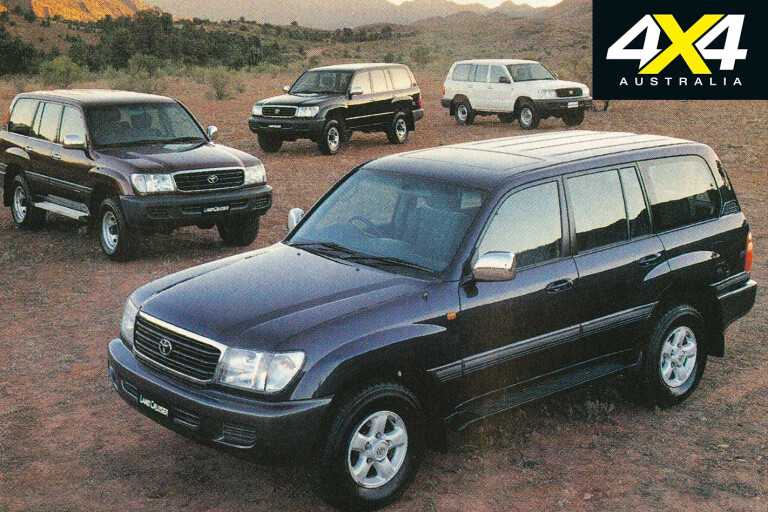
TOYOTA was under pressure to produce a worthy successor to its popular 80 Series Cruiser and succeeded with the release of the 100 Series. There were some slight surprises with the new larger and heavier vehicle, though, which included the option (in GVX models) of a ‘softer’ front-end setup – using independent suspension at the pointy end – but retaining a live-axle rear. Other models – Standard, GXL, continued with live axle front ends.
In a way, Toyota engineers had predicted the future where 4x4s would have to be equally adept around town as they were in the rough stuff and the IFS-equipped 100 Series offered excellent on-road handling (especially compared to the live-axle-equipped GU Patrol) without sacrificing its off-road chops (although it would be haunted by reports of front-end suspension failure in extreme conditions).
As well, it continued with constant 4WD on-road – and pushed the ‘safety’ aspect of this heavily. Add in the option of a stonking 4.7-litre V8 (on top of the various six-cylinder petrol and diesel engines) and the 100 Series really was The Return Of The King.
1999
Jeep Grand Cherokee V8
THE WJ Grand Cherokee gave Jeep its first 4x4OTY gong and impressed judges at the time with its mix of good on-road manners, formidable off-road capability and that smooth 162kW/390Nm 4.7-litre V8 petrol engine, backed by an equally smooth five-speed auto gearbox.
The Limited also featured Jeep’s Quadra-Drive 4WD system that offered constant all-wheel drive on sealed surfaces, limited-slip diffs front/rear along with low-range gearing that included the ability to lock the centre diff.
The interior was next-level for its time, with leather (heated) seats, a 10-stacker CD player, climate-control aircon and plenty more. Fit and finish was – well, for a Jeep – good, and the relatively compact size (and light weight) made the WJ easy to manoeuvre both around town and on tight bush trails.
A five-seater only, it had a reasonable amount of cargo storage space. Even today, you still see a few kicking around, from standard through to highly modified.

COMMENTS